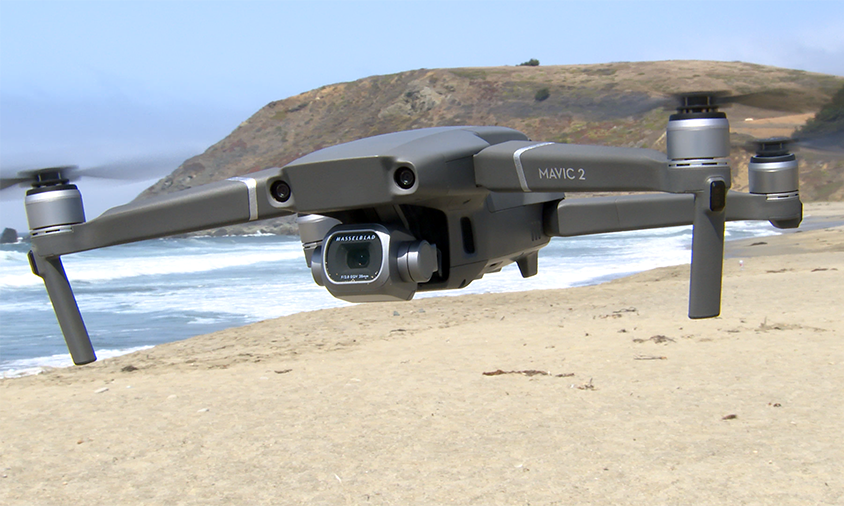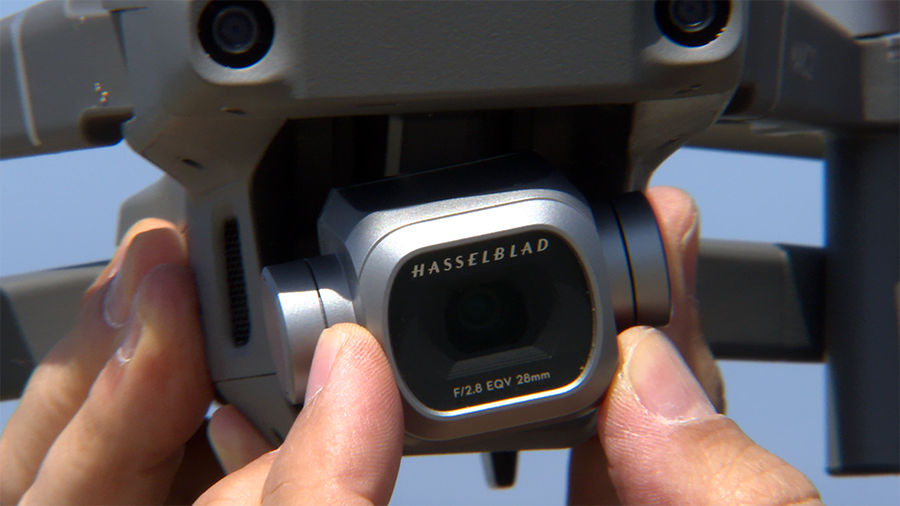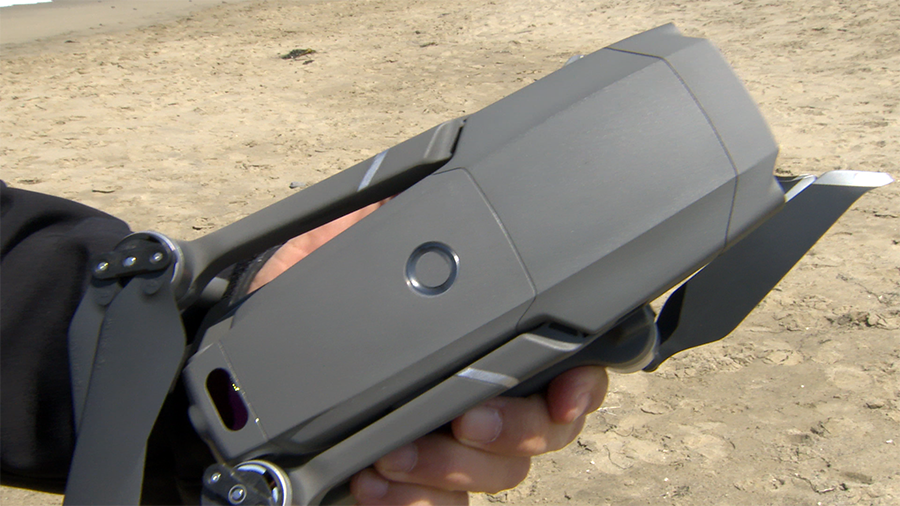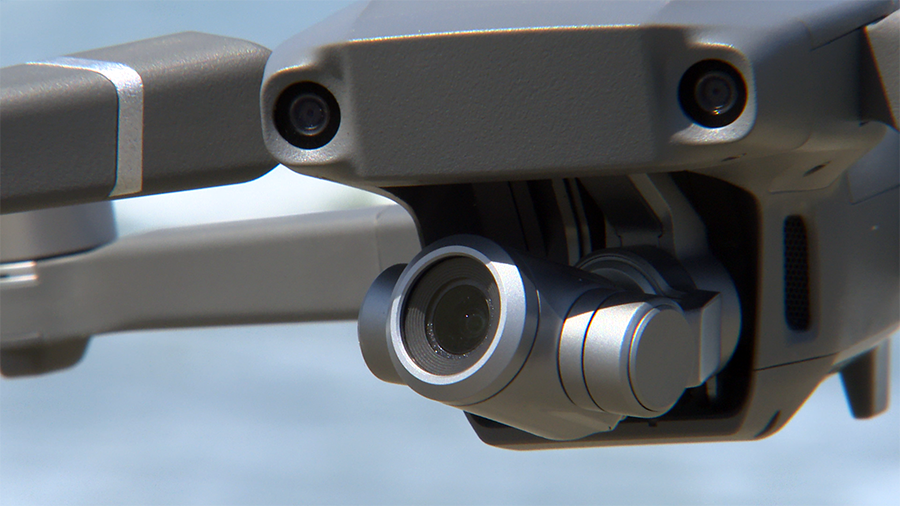DJI's Mavic 2 drone can avoid obstacles in all directions
The most exciting time in the life of any new product category is the first years. That’s when it rapidly sprouts all the cool new features that we’ll one day consider standard. Can you imagine how thrilling it must have been the first time your car came with windshield wipers and a radio?
That’s where we are in drones. Decent drones with decent cameras only started popping up a few years ago, and they’re clearly still not finished developing. Any time people can get excited about a 22-minute battery life, you know they’re talking about a device still in its infancy.
All of which brings us to the Mavic 2, just released by the world’s biggest consumer-drone company, DJI. It’s the company’s new flagship drone. It’s the successor to the Mavic, the first popular folding drone, which DJI introduced in 2016 (here’s my review). Sure, they made some tweaks to the flying part—but the biggest changes are in the camera part.

Two cameras, two models
Torn between adding a zoom lens and adding a bigger sensor (for better pictures), DJI wound up doing both—but not, alas, in the same drone. You have to buy the Mavic 2 in one of two configurations:
The Mavic 2 Pro ($1,450). This drone has a one-inch sensor in a Hasselblad camera—huge for a consumer drone. A big sensor, as any camera nut can tell you, makes a huge difference in color fidelity, detail, dynamic range, and especially low-light clarity. Since the point of having a drone is taking pictures and videos from new vantage points, it’s about time someone started building in a semi-pro camera.

The Mavic 2 Zoom ($1,250). For the first time, DJI offers a 2X zoom lens. It’s an optical zoom, meaning that zooming in doesn’t degrade the footage, as digital zoom does. The zoom is incredibly useful—you’ll use it all the time. It means that you can keep the drone high and out of earshot, but still get a closer picture. (In the video above, the zoom was key to filming those seagulls without startling them.) DJI is following on the heels of the Parrot Anafi, which I reviewed here, right down to the Hitchcock-style “dolly zoom” effect. But in any case, a zoom is very, very nice to have.
The Mavic 2 Zoom has a smaller sensor, but it zooms 2X.
What’s maddening is that these cameras are permanently attached. If you want a different lens, you have to buy a whole new drone.
DJI says that it’s working on a program that will let you send your Mavic 2 to the factory for a one-time camera swap. But you know what would have been much consumer-friendlier? Snap-in camera modules. Same aircraft, different lenses.
Omnidirectional crash avoidance
The other huge news: The Mavic 2 is the first consumer drone to have obstacle sensors on all six sides: Top/bottom, front/back, left/right.
When you’ve turned this feature on, the Mavic 2 essentially refuses to crash. It just beeps frantically and hovers about eight feet from whatever is in its way.
Well, at least that’s the dream. In practice, the side sensors are turned off most of the time! For some baffling reason, DJI has chosen to turn them on only in two situations: When the drone is in Active Track mode (automatically following a moving subject), and in Tripod mode (super-stable hovering or flying, where drone speed and positioning movements are limited for better precision).
The company says it may add more side-sensor modes in future updates. But in the meantime, what the heck?

Flight improvements
Designing a drone is always a high-wire act. The limiting factor for flying time is, of course, the battery. But adding a bigger battery means adding weight, which means—less flying time. The engineers must make themselves crazy.
In any case, the Mavic 2’s engineers decided to go bigger with this drone. Unlike last year’s coat-pocketable Mavic Air, this baby is even larger than the original 2016 Mavic. You’ll be investing in a carrying case.

The company advertises a 31-minute flight time. I’ve always had the feeling that drone makers exaggerate their specs, so this time I measured. I let the drone hover in a living room: no wind, no maneuvers, no camera operation. Perfect conditions for maximum battery life. And guess what? The thing started beeping “Low battery” at 19 minutes, and landed, unprompted, at 22. In short, “31 minutes” is bull.
[UPDATE: In the Comments below, some readers assert that a drone hovering actually uses more power than moving. Could be! But my result appears to be accurate; other testers, including this one and this one, are also getting between 22 and 24 minutes of flight time.]
(In 2003, the digital-camera industry faced a similar problem. The various camera companies’ battery-testing protocols were all over the map, and none of them reflected real-world battery life. So CIPA, an international camera-maker trade group, developed a standard battery-testing protocol: one shot every 30 seconds, turning the camera off after every 10; so many with zoom, so many with flash, and so on. To this day, you can generally trust a camera maker’s battery-life specs, because they’re real-world and consistent across companies. Time for the drone makers to do the same.)
DJI also says that it has improved the signal technology between the included remote and the drone—for a range of five miles! Again, I call baloney; there’s no way the signal in the real world would reaches five miles, even if you didn’t mind breaking the law. (The FAA says you can’t fly a drone farther than you can see it.)

That said, the signal is really good. If you’ve attached your phone to the remote controller to get a drone’s-eye-view, there’s no breaking up or jittering of the picture, even at the outer reaches of line-of-sight. This YouTuber actually got 3.6 miles of range in a rural area, and never saw the video signal break up.
Stability is incredible, too. In the video above, winds on the beach were about 15 miles an hour, but you’d never guess it from the footage; looks like the drone is on a 350-foot-tall tripod. (Original Mavic owners will be pleased—or possibly furious—to learn that the camera is now attached on both sides, instead of just one. It’s much less likely to break off and dangle.)
The camera is on a three-axis gimbal—so without having to move the drone in the air, you can move it left and right, or up and down (although it can’t look directly upward, as the Parrot Anafi can).
Tweaks and features
There’s a huge list of footnotes that, if you’re tempted to spring $1400 for a drone, are worth knowing:
Very bright lights on the bottom come on when it’s dark out. They’re there to help the drone land, but they also look incredibly cool.
On the Zoom model, the “dolly zoom” feature works only on 1080p high definition (not 4K).
On both models, when you’re filming in 4K, the top frame rate is 30 frames a second. (Many videographers prefer 60 fps for smoother video.)
The batteries of the Mavic 1 and 2 models aren’t interchangeable.
The remote is the same as the Mavic 1’s, with one enhancement: There’s a switch on the side for instantly jumping into Sport mode (all sensors off for maximum speed, which DJI claims is 45 mph) or Tripod mode.
The propellers have been designed to be quieter. The drone still sounds like a swarm of bees, but they’re less angry.
In Active Track mode, you draw a box (in the app, on your phone’s screen) around the subject. The drone then follows you, filming you, as you ride, ski, hang glide, or whatever. DJI says that this mode has predictive smarts now, so if you duck behind an obstacle, the drone will pick you up when you re-emerge. In practice, that’s true, although there’s a pause while it tries to find you.
You can charge your phone from the remote’s built-in battery, which can be handy in a pinch.
To Mavic or not to Mavic
The Mavic 2 is a pretty great machine. If you had to choose a drone under $1,500, this is the one you’d want. Its flight is smooth and assured, it’s built like a tank, you have to work pretty hard to crash it, and the pix and videos are terrific. Here’s a sampling:



That said, you can get many of the Mavic 2’s best features for half the price with the Parrot Anafi. It’s about the same size, it’s got a 2.8X zoom, and its gimbal can look all the way upward (cool when you’re flying under something). On the other hand, the Anafi has no obstacle-avoidance sensors at all. Is it worth $700 to you to be more careful?
If you already own a Mavic 1 or a Mavic Air, don’t bother upgrading if you just want the flying improvements. But if your livelihood involves aerial photography or video, spend tonight looking over samples from the Mavic 2’s cameras as well as your your credit-card statement. The two Mavic 2s don’t introduce any earth-shattering new features, but the image quality might just rock your world.
David Pogue, tech columnist for Yahoo Finance, welcomes comments below. On the Web, he’s davidpogue.com. On Twitter, he’s @pogue. On email, he’s [email protected]. You can sign up to get his stuff by email, here.
More by David Pogue:

